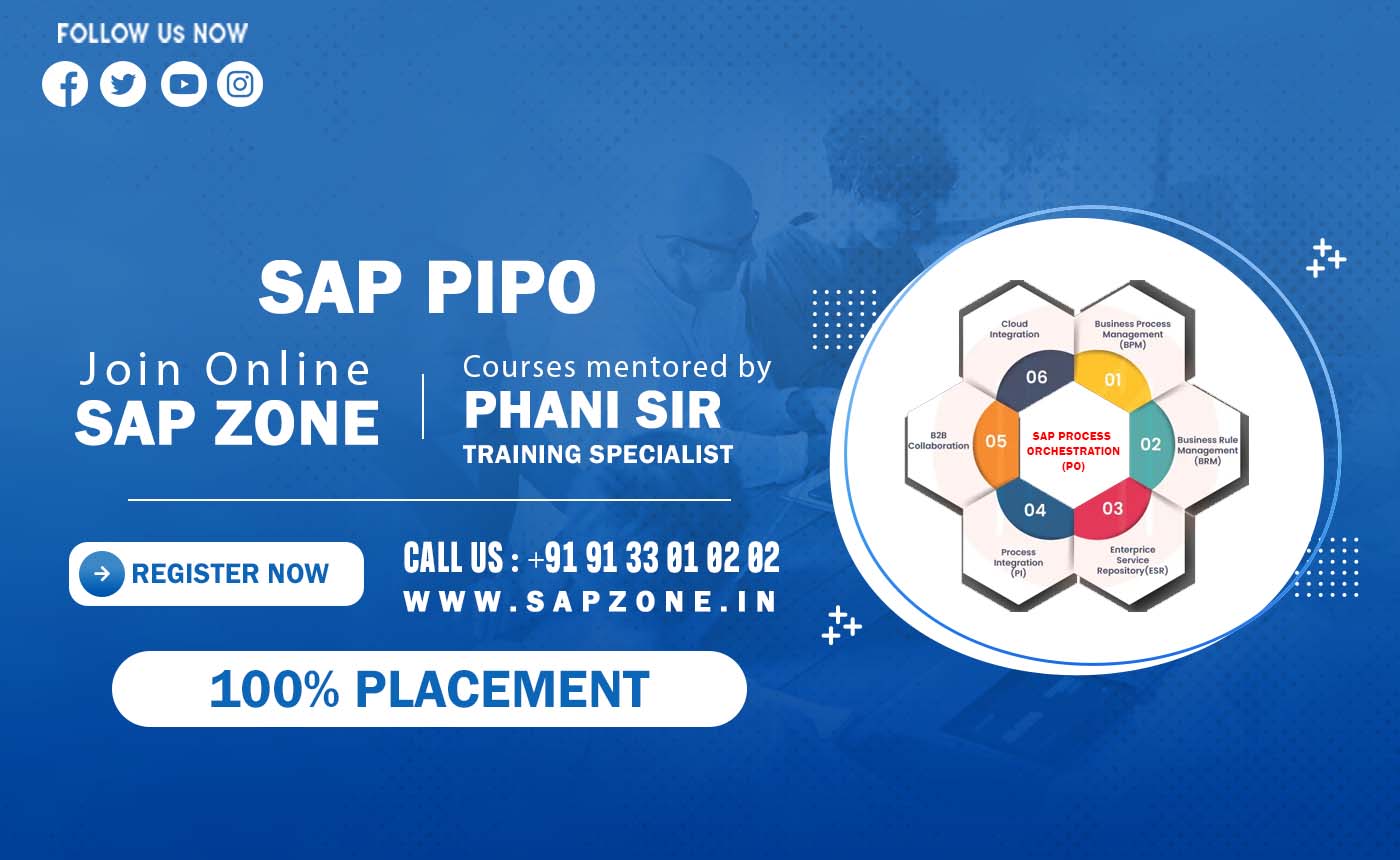SAP PIPO

About Course
SAP PI/PO Course Content
SAP Process Integration
Introduction to SAP
Introduction to Middleware
What is Integration and why
Introduction of SAP PI/PO
1. SLD (System Landscape Directory)
Software Catalog
Product and Product Versions
Software Unit
Software Component and its versions
System Catalog
Technical Systems
Business Systems
2. ESR (Enterprise Service Repository)
Importing Software Component Versions
Integration Scenario & Integration Process
Integration Scenario
Actions
Integration Process
Interface Objects
Service Interface
Message Type
Data Type
Context Object
External Definition
Mapping Objects
Message Mapping
JAVA Mapping
Operation Mapping
Mapping Template
Imported Archives
XML Validation (Integration Server/Adapter Engine)
Imported Objects
RFCs
IDOCs
Mapping:
Standard Functions
Node Functions
Text
Boolean
Conversions
Constants
User Define Function (UDF)
Introduction to Integration Builder:
Integration Directory
Creating Configuration Scenario
Party
Service without Party
Business System
Communication Channels
Business Service
Communication Channels
Integrated Configuration Scenarios (ICO)
Advance Adapter Engine (AAE)
Introduction to Adapters
Need of Adapters
Types and elaboration on various Adapters
1. FILE
2. SOAP
3. JDBC
4. IDOC
5. RFC
6. XI (Proxy Communication)
7. HTTP
8. Mail
9. IDOC_AAE
10. HTTP_AAE
Introduction to BPM
Different types of steps in BPM.
Monitoring Tools
ABAP stack monitoring
JAVA stack Monitoring
Non SAP to Non SAP Systems Integrations
1. FILE TO FILE
2. JDBC TO FILE
3. SOAP TO FILE
4. FILE TO JDBC
5. HTTP TO FILE
SAP to Non SAP Systems Integrations
6. IDOC TO FILE
7. RFC TO FILE
8. PROXY TO FILE
Non SAP to SAP Systems Integrations
9. FILE TO IDOC
10. FILE TO RFC
11. FILE TO PROXY
Transporting Interface overview
File Based System
CTS+
PGP (Encryption/Decryption) Overview
End to End Support Activities
Introduction of Message Monitoring and Communication Channel Monitoring
Introduction to Support Activities based on the real time incidents
Trouble Shooting Interfaces and Real Time Scenarios Walk Through
Student Ratings & Reviews
